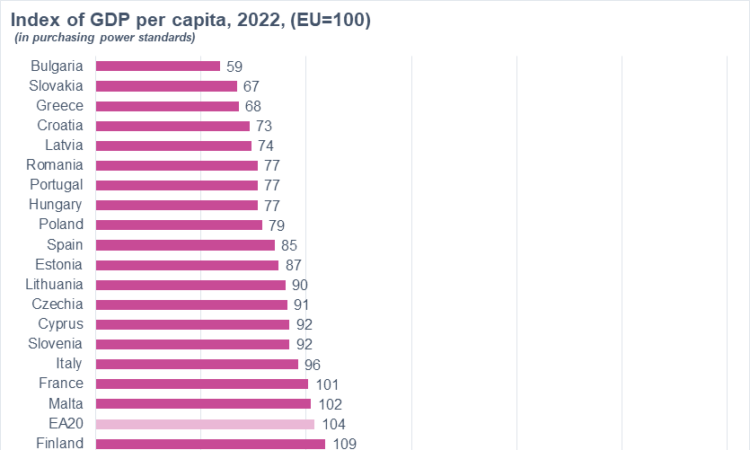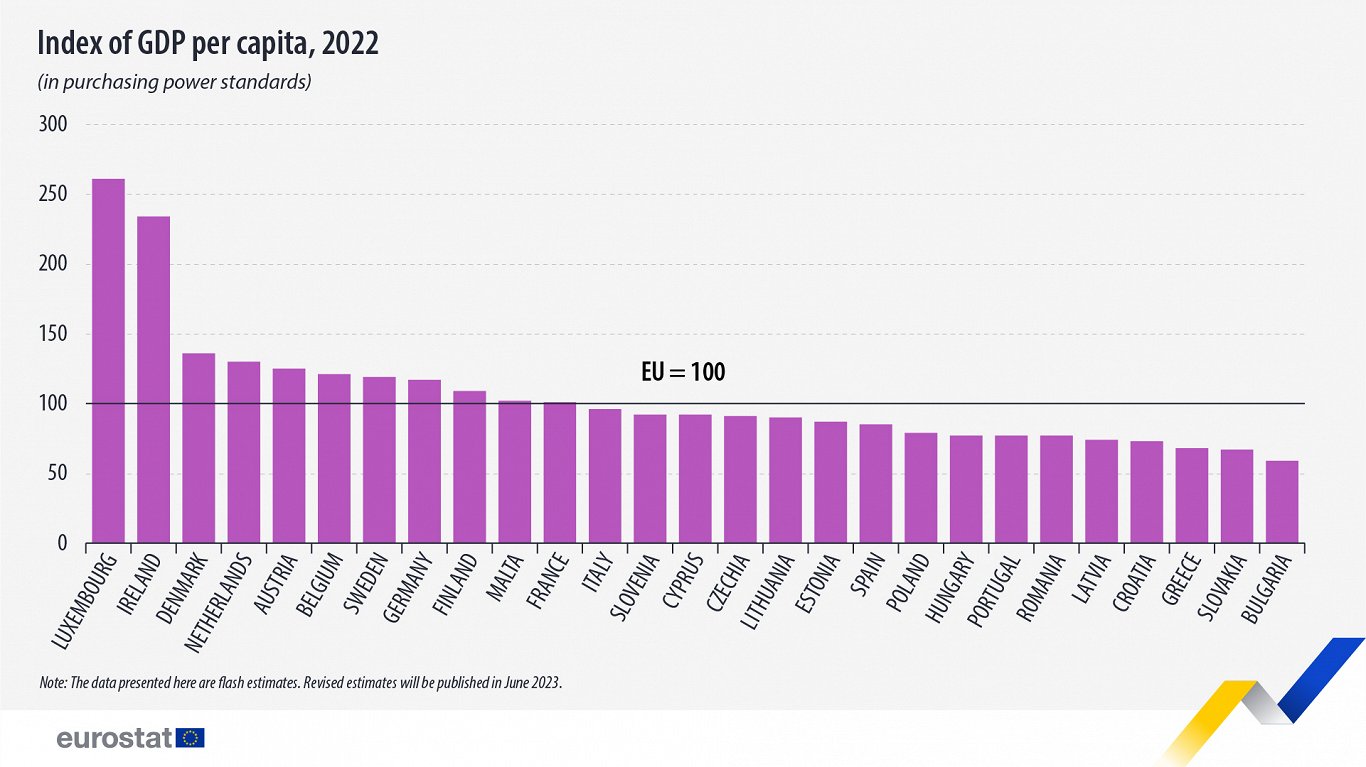
This information comes from flash estimates of purchasing power parities and GDP for 2022 published by Eurostat on March 23.
The data show substantial differences between the EU members in terms of GDP per capita, used to measure economic activity. In 2022, Luxembourg and Ireland recorded the highest levels of GDP per capita (161% and 134% above the EU average, respectively).
They were followed at a distance by Denmark (36% above the EU average), the Netherlands (30%), Austria (25%), Belgium (21%), Sweden (19%) and Germany (17%).
In contrast, Bulgaria (41% below the EU average), Slovakia (33%) and Greece (32%) registered the lowest GDP per capita. Latvia was fifth-lowest on the list with GDP 74% of the EU average (i.e. 26% below the EU average). The figure is higher than 2021’s equivalent of 72%.

Index of GDP per capita, 2022
Photo: Eurostat
“In international comparisons of national accounts data, like GDP per capita, it is desirable not only to express the figures in a common currency, but also to adjust for differences in price levels. Failing to do so would result in an overestimation of GDP levels for countries with high price levels, relative to countries with low price levels,” explained Eurostat.
Sweden, Germany, Finland, Malta and France are the other EU Member States with a GDP per capita above the EU average. Italy, Slovenia, Cyprus and Czechia are less than 10% below that average, followed by Lithuania, Estonia and Spain at 10% to 20% below. The GDP per capita of Poland, Hungary, Portugal, Romania, Latvia and Croatia is less than 30% lower than the EU average, while Greece and Slovakia are less than 40% below. Bulgaria records a GDP per capita at 41% below the EU average.
Select text and press Ctrl+Enter to send a suggested correction to the editor
Select text and press Report a mistake to send a suggested correction to the editor






